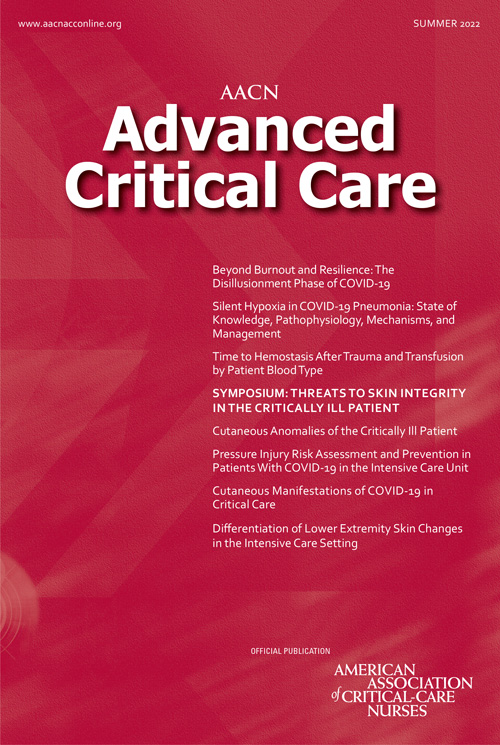“Pressure Injury Risk Assessment and Prevention in Patients With COVID-19 in the Intensive Care Unit” retrospectively examined pressure injury risk in a sample of 1,920 adult patients admitted to one of two intensive care units (ICUs) at a Utah teaching hospital between April 2020 and April 2021.
The study is part of the research team’s ongoing work to develop ways to more accurately determine pressure injury risk among ICU patients. The researchers compared the predictive validity of the Braden Scale for Predicting Pressure Sore Risk for patients with COVID-19 with patients who were negative for the disease and were able to identify additional risk factors for device-related HAPrIs in critically ill patients with COVID-19.
Co-author Jenny Alderden, PhD, APRN, CCRN, CCNS, is an associate professor, Boise State University School of Nursing, Boise, Idaho.
“This study and others provide further evidence that patients with severe COVID-19 are at even greater risk for pressure injuries than the general ICU patient population,” she said. “Prevention begins with accurately determining risk, and clinicians must consider additional factors beyond those assessed with common classification tools.”
Since its development in 1987, the Braden Scale has become the most widely used tool in the United States to determine pressure injury risk across all care settings, but a growing body of literature shows that it lacks predictive validity in the ICU population, finding that nearly all ICU patients are at high risk.
A total of 1,920 patients were included in the study sample, including 407 diagnosed with COVID-19. In the entire sample, at least one HAPrI developed in 354 patients (18%), with a third of those considered device-related. Among the 407 patients with COVID-19, at least one HAPrI developed in each of 120 patients (29%), with nearly half (46%) considered device-related.
The research team looked at data related to demographics, diagnoses, comorbidities, hospital length of stay, treatment interventions, laboratory tests, nutrition and the results of skin assessments conducted by nurses.
Statistical analysis revealed two variables as potential risk factors for device-related HAPrIs: fragile skin and prone positioning during mechanical ventilation.
The researchers also point to the potential for machine learning methods and explainable artificial intelligence to improve the accuracy of HAPrI risk assessments, as a way to provide additional information for clinicians to incorporate into their patient care decisions.
The article is one of several published in the journal’s summer 2022 issue about threats to skin integrity in critically ill patients. Other articles in the symposia focus on:
- Cutaneous anomalies in ICU patients
- Cutaneous manifestations of COVID-19 in critical care
- Differences of lower extremity skin changes in the ICU setting
AACN Advanced Critical Care is a quarterly, peer-reviewed publication with in-depth articles intended for experienced critical care and acute care clinicians at the bedside, advanced practice nurses, and clinical and academic educators. Each issue includes a topic-based symposium, feature articles, and columns of interest to critical and progressive care clinicians.
Access the issue by visiting the AACN Advanced Critical Care website at http://acc.aacnjournals.org/.
About AACN Advanced Critical Care: AACN Advanced Critical Care is a quarterly, peer-reviewed publication with in-depth articles intended for experienced critical care and acute care clinicians at the bedside, advanced practice nurses, and clinical and academic educators. An official publication of the American Association of Critical-Care Nurses (AACN), the journal has a circulation of 4,845 and can be accessed at http://acc.aacnjournals.org/.
About the American Association of Critical-Care Nurses: For more than 50 years, the American Association of Critical-Care Nurses (AACN) has been dedicated to acute and critical care nursing excellence. The organization’s vision is to create a healthcare system driven by the needs of patients and their families in which acute and critical care nurses make their optimal contribution. AACN is the world’s largest specialty nursing organization, with more than 130,000 members and over 200 chapters in the United States.
American Association of Critical-Care Nurses, 27071 Aliso Creek Road, Aliso Viejo, CA 92656; 949-362-2000; www.aacn.org; facebook.com/aacnface; twitter.com/aacnme


